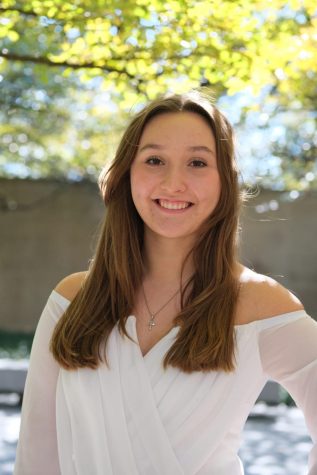Angelina Alvarez, sophomore and political science major, has not had a single professor of color while attending DePaul.
She said she hasn’t even had a professor of color for classes that cover Latin American or general social justice issues.
“When I first started I was expecting that I would see a lot more professors of color mostly because of the classes I was taking,” Alvarez said. “For example, when the classes cover topics such as Indigenous issues, I was hoping to have a professor who’s Indigenous in one way or another, being Indigenous myself. But sadly, I’m yet to see any Indigenous representation in the faculty, or at DePaul in general.”
When hiring full-time faculty, DePaul claims to be dedicated to upholding the Vincentian mission which calls for making education accessible, especially for “underserved and underrepresented” communities.
Currently, there are 862 full-time faculty members at DePaul. Full-time faculty members are defined as professors, associate professors, assistant professors and instructors, according to DePaul Institutional Research and Market Analytics (IRMA). Adjunct professors are not included as full-time faculty members.
Out of the total full-time faculty members, there are two American Indian/Alaskan Native, 11 are multiracial, 62 are Asian, 62 are African American, 62 are Hispanic and 554 are white, according to the IRMA.
Mikyhia Worsham, sophomore and political science major, felt that there is not enough diversity in DePaul’s full-time faculty.
“I am frustrated and disheartened by these numbers,” Worsham said. “It’s a slap in the face to me and all of the other BIPOC students and faculty on this campus.”
Worsham is not the only student who is discouraged by the statistics. Flavio Diaz, sophomore and international management major, looked saddened when he heard the statistics.
“I am shocked, I thought DePaul was doing a good job, but I guess not,” Diaz said.
Another concern students had when looking at the DePaul IRMA statistics on full-time faculty diversity was the language used to describe undocumented faculty members. In the table, undocumented full-time faculty members are referred to as “nonresident aliens.” There are currently 61 full-time faculty members labeled this way on the document.
“It completely diminishes [the full-time faculty members’] essential role to the university,” said Carolyn Espinoza, freshman and elementary education major.
Diaz said he hated the label.
“It marginalizes and criminalizes the faculty members,” Diaz said.
Alvarez said she is upset the university is using this language in official documents because it is dehumanizing.
“It’s a slap in the face to someone who’s worked hard to get to where they are, just to be referred to as a ‘nonresident alien,’” Alvarez said. “From my knowledge, immigration agencies have been told not to use the term ‘illegal alien’ under the Biden administration. So how is the term ‘nonresident alien’ any different? Why is the term being used on these documents? It implies the same thing. It implies that you’re an immigrant and you don’t belong here.”
Alvarez said the language used in the document ties into the problem of diversity, it shows another obstacle people of color and undocumented individuals have to face when trying to climb the social and economic ladder.
“The ladders POC have to climb are taller than the ones non-POC have to climb,” Alvarez said. “POC belong at places like DePaul, they deserve to have full-time jobs, and they deserve representation.”
When the terminology was mentioned to Cindy Pickett, DePaul associate provost for diversity, equity and inclusion, said she is going to raise the issue to the IRMA team.
Looking back to the diversity concern students have, since 2017, there has been a decrease of 54 full-time faculty members university-wide. Of this, African Americans, American Indians/Alaskan Natives, undocumented, white and unknown groups have all decreased, according to IRMA.
Pickett said the decrease in faculty members is a result of the size of the student body.
“College enrollments in the United States have been steadily declining over the last 10 years,” Pickett said in a statement to The DePaulia. “In 2012, DePaul’s student enrollment was 24,966 and today it is 21,670. When there are fewer students, there is less revenue generated, and fewer faculty salaries can be supported.”
When hiring full-time faculty members, universities rely heavily on outreach programs for candidates which could be costly. With the student body decreasing, therefore decreasing the institution’s revenue, DePaul is not able to do as much outreach as they would like, according to Pickett.
DePaul currently utilizes online platforms such as Interfolio, a faculty information system for higher education institutions, and CareerArc, a social media-based hiring platform that aims to “attract and hire top talent,” according to their website.
Worsham said she would like to see the university broaden the platforms it uses and fund recruiting teams to outreach to more qualified people of color instead of leaning funds into charter shuttle buses.
“How can the university expect to bring in diversity if the only platforms it utilizes are those accessible and most popular to the white Chicagoan populations?” Worsham said. “I suggest, if diversity and valuable education are truly important to DePaul, that the university send scouts to other schools not just colleges in the area, being more proactive in the search.”
Alvarez also said the search should be expanded when looking for candidates.
Diaz said he would like to see a full-time faculty racial and ethnic ratio that is similar to the makeup of the student body.
Currently, 65 percent of the full-time faculty ratio is white, according to IRMA.
“This is lower than the national average of 74 percent white and lower than DePaul’s peer institutions, 72 percent,” Pickett said.
The student body for the 2021 to 2022 academic year, however, is 48.5 percent white, according to IRMA.
Though DePaul is statistically doing better than other institutions, students like Alvarez are still critical of the full-time faculty hiring.
“If DePaul truly believes in its mission statement, I think they should follow in Vincent de Paul’s footsteps and help to serve the underserved and underrepresented,” Alvarez said. “Employing more diverse full-time faculty would be a small, yet vital step in the right direction. It would give more opportunities to POC, many of whom come from very underrepresented communities, especially at institutions such as DePaul.”
Worsham said finding candidates of color and candidates that are representative of the student body is important to create comfortability in the classroom for students of color. Previous DePaulia reporting said that the honors program was having social justice classes taught predominately by white professors.
“Even when I tried going outside of the African and Black Diaspora and political science departments for classes that centered on Black experiences/figures, I found that my non-black [white] peers took up most of the class seats,” Worsham said. “Non-black professors teaching classes focusing on BIPOC issues, what kind of message does that send to BIPOC students? When I look left and right, I don’t see me. When I look to the front of the classroom, I don’t see me.”
Alvarez said she would appreciate more professors of color to feel better represented in a higher education setting.
“For someone like me who’s always hoping for representation due to the lack of it in film,TV, and most media, I would really hope to see it represented in academia, especially my own school,” Alvarez said. “I think it’s important for young POC to see that representation and see that it’s possible to get jobs in academia, and work full time somewhere such as DePaul.”
Espinoza said she wants more professors of color because it is more likely she will relate to them as a first generation student herself.
“I think this would help me ease into the college experience a bit better and for future students incoming,” Espinoza said.
Worsham said she is frustrated because students of color are voicing they would like more professors of color, but there has not been much done in response.
“The real question is when is DePaul going to listen?” Worsham said. “When will DePaul take initiative to make that happen?”
Worsham said she seems to only see change when white students ask for it.
“I guess the wrong people are asking,” Worsham said. “Maybe if some white students got up, if white faculty members started advocating for more bipoc faculty, maybe then it would happen. I’ve seen DePaul budge for so much, why is it they won’t budge for Black students and students of color.”
Pickett said in a statement to The DePaulia the university increased its diversity in full-time faculty over the past five years.
“When we look at the last five years of faculty hires at DePaul, there is a clear trend toward greater diversity,” Pickett said. “For example, during this period, 13 percent of hires at DePaul have been African-American and 10 percent have been Hispanic/Latinx. All faculty search committee members must take a workshop on how to conduct a proactive search that aims to create broad and diverse applicant pools and equitable search procedures.”
In 2021, professor Sydney Dillard sued DePaul for racial and disability discrimination and in 2020, former professor Lisa Calvente said she was denied tenure because of racism, according to previous DePaulia reporting.
Looking to the future for DePaul, Alvarez said she is hopeful the diversity in DePaul’s faculty will grow and the terms in the document will become less insensitive.
“While I’m not sure if there will be a push for more diversity in full time faculty members, I’m hoping there will be,” Alvarez said. “It is definitely a possibility, there’s a wide range of people with so much diversity going into academia, I’m hoping there will be a push for more diverse full time faculty members in the coming years.”



